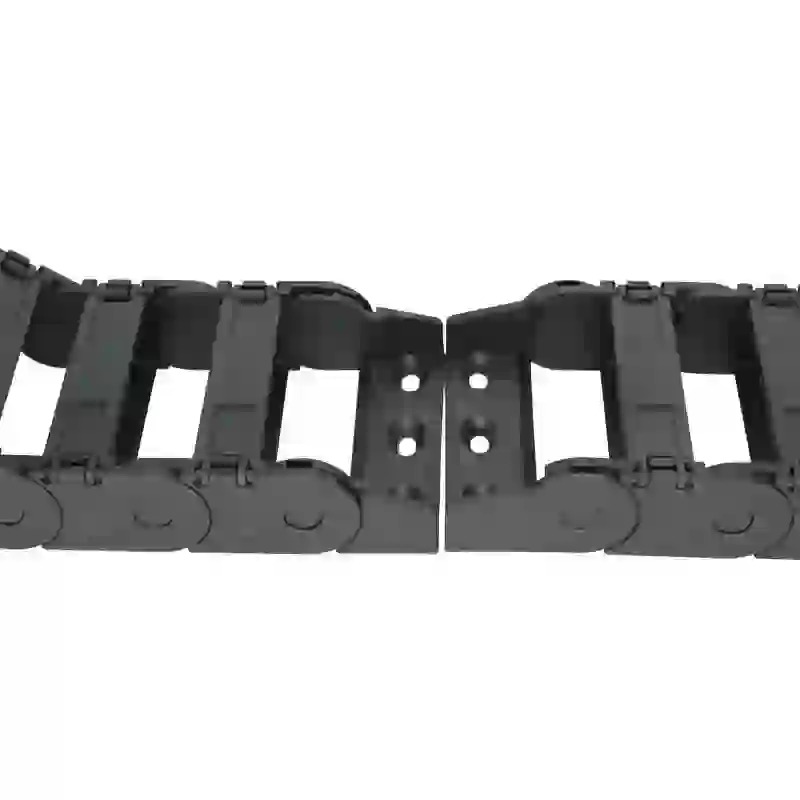Cable Management Solutions for Hoisting Applications in Industrial Settings
The Importance of Cable Carriers for Hoists
In modern industries, hoisting equipment plays a critical role in lifting and transporting heavy loads. Whether used in construction sites, warehouses, or manufacturing facilities, hoists are essential for enhancing efficiency and ensuring safety. One key component that significantly impacts the performance and longevity of hoisting systems is the cable carrier. In this article, we will delve into the importance of cable carriers for hoists, their benefits, and their applications.
What is a Cable Carrier?
A cable carrier, also known as a drag chain, cable track, or energy chain, is a device designed to guide and protect cables and hoses in moving applications. These carriers help manage and organize the cables connected to hoist systems, allowing for smooth and repetitive motion without tangling or excessive wear. By providing a structured path for cables, they ensure that the necessary power and control signals can reach the hoist mechanism reliably and safely.
The Role of Cable Carriers in Hoisting Systems
1. Protection of Cables Hoists operate in dynamic environments where cables are subjected to movement, flexing, and sometimes harsh conditions. Cable carriers safeguard these cables from damage caused by friction, abrasion, and environmental factors. This protection extends the life of the cables, reducing downtime due to repairs or replacements.
2. Organization and Safety In any lifting application, the organization of cables is crucial. Cable carriers keep cables neatly arranged, minimizing the risk of tangling and tripping hazards in work areas. An organized setup not only enhances safety for workers but also contributes to a more professional and efficient workplace.
3. Enhanced Mobility With a cable carrier, the movement of the cables is streamlined, allowing for smoother operation of the hoist. As the hoist moves vertically or horizontally, the cable carrier follows the motion, ensuring that the cables are not restricted or overly strained. This seamless mobility is essential for precision lifting tasks.
4. Reduced Maintenance Costs By providing a protective and organized pathway for cables, cable carriers help mitigate wear and tear. This translates to lower maintenance costs over time. Hoist operators can spend less time addressing cable issues and more time focusing on their primary tasks, thus improving productivity.
Benefits of Using Cable Carriers with Hoists
- Durability Many cable carriers are made from robust materials like polyurethane, steel, or nylon, designed to withstand the rigors of industrial environments. Their durability ensures that they can endure frequent use and harsh conditions without compromising functionality.
cable carrier for hoist

- Customizability Cable carriers are available in various sizes, shapes, and configurations, allowing for tailored solutions for different hoisting applications. Whether it’s a small workshop or a large industrial facility, the right cable carrier can be selected to meet specific needs.
- Improved Aesthetics Beyond functionality, cable carriers can also enhance the visual appeal of an installation. With organized cables, the overall appearance of workspaces is improved, creating a more professional environment.
- Ease of Installation Many cable carriers are designed for straightforward installation, allowing for quick setup and integration into existing hoisting systems. This ease of use is particularly beneficial for facilities looking to upgrade or modify their operations with minimal downtime.
Applications of Cable Carriers in Hoists
Cable carriers are versatile and can be employed in various hoisting applications, including
- Construction Sites Hoists used for lifting materials to elevated levels can benefit significantly from cable carriers, ensuring cables remain intact as they navigate around obstacles.
- Manufacturing Facilities In production lines, automated hoisting systems equipped with cable carriers facilitate efficient movement of components and materials, reducing manual handling risks.
- Warehouse Operations Cable carriers support overhead hoists in warehouses, improving inventory management and space utilization.
- Entertainment Industry Rigging systems for theaters and concerts rely on reliable cable management, where cable carriers ensure the safety and performance of stage equipment.
Conclusion
In conclusion, cable carriers are indispensable components of hoisting systems that improve safety, efficiency, and longevity. By protecting cables, enhancing mobility, and reducing maintenance costs, cable carriers enable hoists to perform optimally in various industrial applications. As industries continue to evolve, the role of cable carriers will remain integral to advancements in hoisting technologies, ensuring safe and effective operations in the demanding environments they serve. Investing in high-quality cable carriers is a wise choice for any organization looking to enhance its hoisting capabilities.








